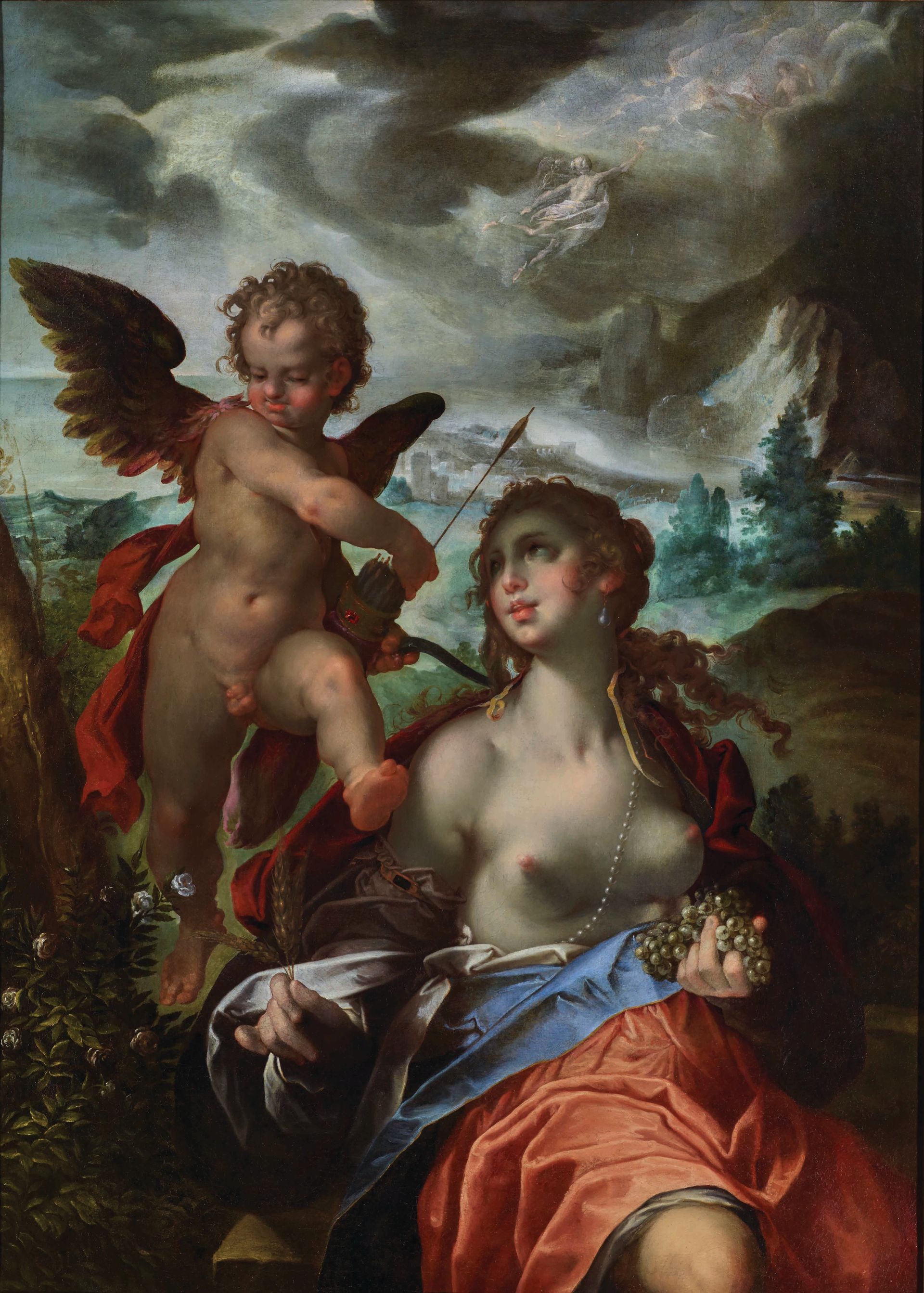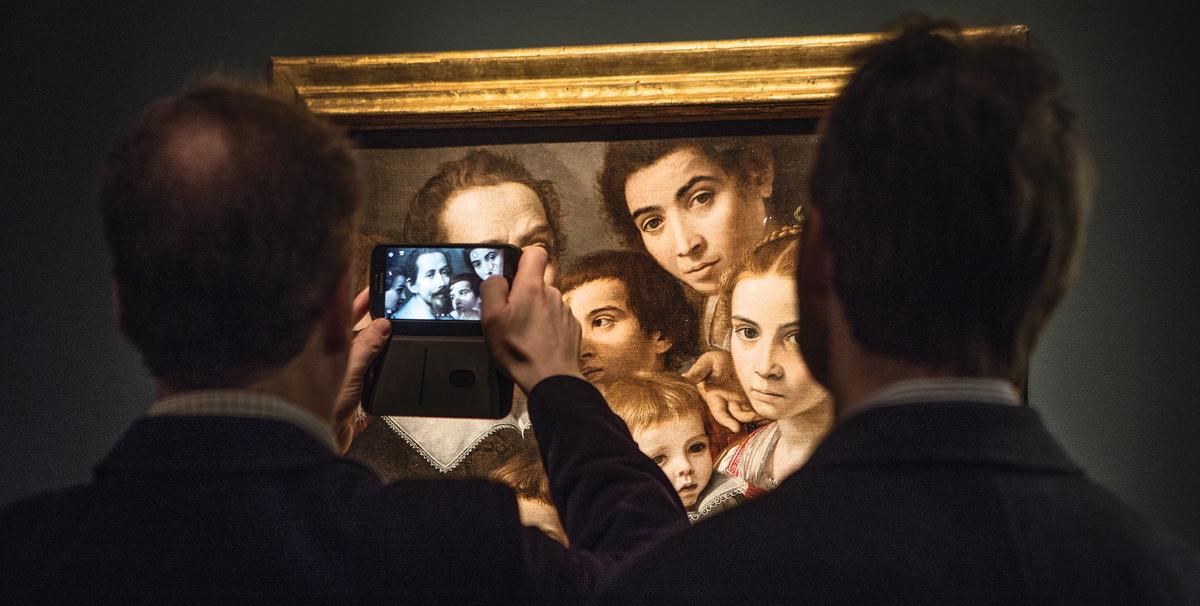Back in 1975, when Maastricht’s Pictura fair—the forerunner of Tefaf—was founded, Old Masters were the most prestigious and expensive art that money could buy. Velázquez’s Portrait of Juan de Pareja still held the record price for any work sold at auction, bought five years earlier by New York’s Metropolitan Museum of Art for $5.5m.
At times, anyone going around this year’s Tefaf Maastricht fair (7-15 March) could be forgiven for thinking that it is still 1975. There are the stands with those same dark walls, those good old Dutch, Flemish and Italian pictures, those superb Rembrandt prints, and those middle-aged white men in suits and ties, standing around trying to sell them.
Of course, outside in the wider art market, and the wider world, quite a lot has changed. Men now hardly ever wear ties, and Old Masters, for a variety of reasons, have also largely fallen out of fashion. According to a report published by the London-based analysts ArtTactic, Sotheby’s and Christie’s European Old Masters sales grossed a combined hammer total of $239m in the whole of 2019, far below the nine-figure sums the companies’ respective auctions of contemporary art raised on single nights in New York in November.
The $60bn global art market is now dominated by works made in the past 100 years, or days. But every March, dozens of serious-minded art dealers continue to bring the finest, freshest, most meticulously catalogued Old Master pictures they can find to Tefaf Maastricht.
And, sometimes, they sell them.
“We’re part of a well-oiled machine,” says Bob Haboldt, an Old Master specialist with galleries in New York, Amsterdam and Paris, who has exhibited at all 32 annual editions of Tefaf Maastricht. “If you add oil, it will continue to run.”
Yet he is realistic about the strengths and limitations of Europe’s biggest fair devoted to museum-quality art and antiques. “There are about 40 galleries, 400 museums and 400 collectors prepared to pay €100,000 or more for an Old Master picture,” Haboldt says, aware of the thousands on the client lists of contemporary mega-galleries such as Gagosian and Pace. “We specialise in art history from A-X, not Y-Z. That part of the story still needs to be told,” he adds.
But dealers in Old Masters, unlike contemporary galleries specialising in Z, don’t have access to a continuous supply of new material. They have to compete with the auction houses for the few long-unseen Old Masters that become available. The salerooms, particularly Sotheby’s, have become increasingly aggressive and inventive about gaining market share. Sotheby’s annual Masters Week of auctions in January in New York raised a hefty $76.2m with fees, and the company has courted younger clients with a succession of fashion collaborations, such as teaming up with the American “streetwear savants” Highsnobiety.
“It’s gimmicky,” Haboldt says. “Fairs provide a counterbalance to that culture. People can take their time, look at the painting and do their research.” He will be showing the privately sourced, early-16th-century panel painting Landscape with St Christopher, by the Flemish master Joachim Patinir and his studio, priced at €650,000.
It’s the only fair where you feel you’re entering a museum that’s for sale. It’s encyclopedic. You don’t feel that at Art BaselMarco Voena, partner at Robilant + Voena
“It’s the only fair where you feel you’re entering a museum that’s for sale,” says Marco Voena, a partner at Robilant + Voena, dealers in Old Master and 20th-century art with spaces in London, Milan and St Moritz–one of more than 275 exhibitors at this year’s Tefaf. “It’s encyclopedic. You don’t feel that at Art Basel.”
His gallery will be showing a rediscovered portrait by the Milanese artist Giulio Cesare Procaccini of the fast-living, early-17th-century Italian actress Orsola Pomoni Cecchini, known as Flaminia Comica. Baroque portraits of actresses are rare and this canvas will be priced at $2.6m.
One of the most significant discoveries on show at this year’s Tefaf will be the finely preserved Bartholomeus Spranger canvas, Venus and Cupid with Mercury and Psyche – An Allegory (around 1600), being shown by the London dealer Mark Weiss with a price tag of $5.5m. Bought from an Italian private collection and not seen on the auction market since the mid-18th century, this tour-de-force of Northern Mannerist painting was thought to have been a commission for Rudolf II, Holy Roman Emperor, at Prague Castle. It is just the sort of late Renaissance picture that could appeal to US museums, whose collections contain few paintings by Spranger –and who often have pockets deep enough to afford this calibre of work.

Bartholomeus Spranger’s Venus and Cupid with Mercury and Psyche—An Allegory (around 1600) Courtesy of the Weiss Gallery
Fear that the opening of two annual sister fairs in New York in 2016 would discourage US clients from visiting Tefaf Maastricht appear to be unfounded, at least when it comes to institutions, exhibitors say. “American museums get a budget from donors every year and they keep on buying,” says the Geneva-based exhibitor Salomon Lilian, who, at Tefaf Maastricht 2019, sold Old Masters priced between $1m to $1.5m to the Museum of Fine Arts in Boston, the Cleveland Museum of Art and the Art Institute of Chicago.
But paintings in the €100,000-€300,000 range have become difficult to sell. “We used to sell nice, but not museum quality, pictures to Belgian and Dutch private clients, but they’ve disappeared,” Lilian says. He has high hopes for the hitherto-unrecorded, signed panel painting Merry Company in an Inn, by the 17th-century Dutch master Jan Steen, priced at €700,000. “Jan Steen is old-fashioned taste, but it’s a big name,” he says.
Shockingly, the same could now be said about Rembrandt. This year’s Tefaf will showcase a fine impression of the Dutch artist’s signed and dated 1638 etching, Adam and Eve, famously showing the serpent with legs and an elephant galumphing through the Garden of Eden in the background. Acquired at auction more than 20 years ago, this is being brought by the Tefaf stalwarts H.H. Rumbler of Frankfurt. The gallery director Petra Rumbler says her particular niche of Old Masters has not changed that much. “Our collectors are not really investment clients,” she says. “They are very serious. It’s not like the US, where people keep things for three years and then make a profit.”
The €350,000 being asked for her Rembrandt seems a serious enough price. But it is a sign of our times that it appears inexpensive compared with the $493,000 (with fees) paid for a 2004 Banksy Girl with Balloon screenprint at a Christie’s auction in September.
Dealers, unlike the auction houses, cannot try to reinvent the market for Old Masters–even the biggest simply do not have the marketing budget or reach. Tefaf Maastricht is what it is. But it isn’t what it was.
• Read our Tefaf 2020 articles here or subscribe for the full special guide


